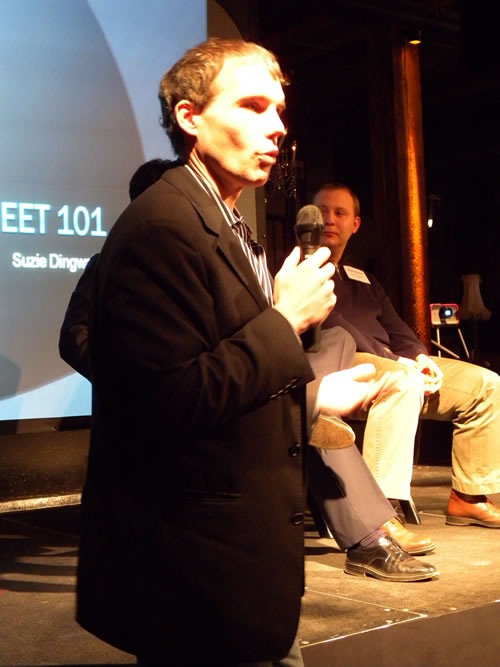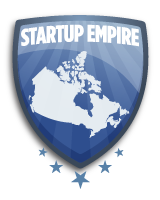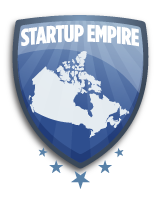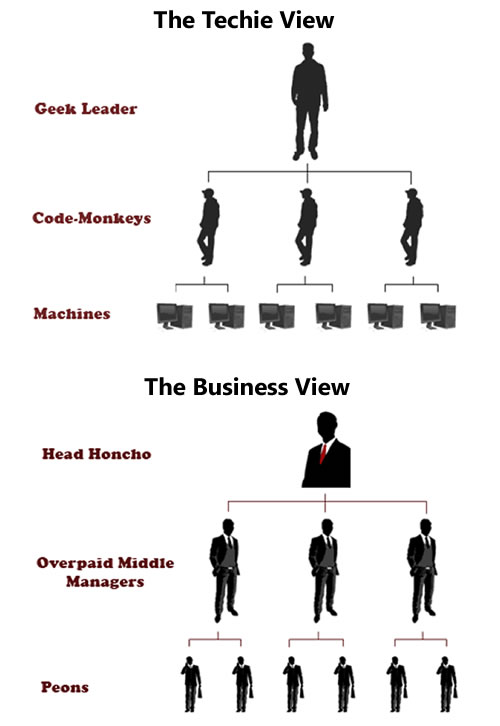
 The second presenter at yesterday’s Startup Empire conference was Austin Hill. Austin’s one of the founders of the Company Formerly Known as Zero-Knowledge Systems (they’re now Radialpoint), where he served as both Chief Technology Officer, Chief Strategy Officer and Executive Vice President. He’s the co-founder of Montreal-based tech startups Akoha, where he serves as CEO and Standout Jobs, where he is Chairman. Austin’s blog is Billions with Zero Knowledge.
The second presenter at yesterday’s Startup Empire conference was Austin Hill. Austin’s one of the founders of the Company Formerly Known as Zero-Knowledge Systems (they’re now Radialpoint), where he served as both Chief Technology Officer, Chief Strategy Officer and Executive Vice President. He’s the co-founder of Montreal-based tech startups Akoha, where he serves as CEO and Standout Jobs, where he is Chairman. Austin’s blog is Billions with Zero Knowledge.
Here are my notes from his presentation, Slow Down and Speed Up: Handling a Fast-Moving Startup in Turbulent Times.
Reality Check
- It’s time for a reality check
- The general attitude: things are bad out there — there’s a lot of fear
- Summed up in Sequoia’s presentation, R.I.P. Good Times
- The collapses of companies are mirrored by collapses of infrastructure in the U.S. (shows picture of bridge in Minnesota)
- The reality: There is a very rough recession out there
Business Models
- Mary Meeker’s take: advertising is get killed, and the upcoming downturn will be worse than the last one
- I don’t believe advertising is a business model
- A business model is something that answers the "How can I get customers no one else will get?"
- Advertising is just a way to get revenue
- Look at the tech blogs: you’ll see lots of stories on firings and layoffs
- Blogs like TechCrunch are becoming "Fucked Company 2.0"
- Most of the companies laying off people have a burn rate of $10,000 per employee per month
- Companies like Mahalo had a burn rate was $600,000 a month — in many cases, without a business model
- This is not the model Canada exists in
- You hear stories saying that the VC model being broken; the truth is that it’s been broken for years
- The IPO market has been closed for tech since the last downturn
- The VC model will only get worse, especially in the US — the economics do not hold up
- "In a tornado, even pigs get to fly"
- The guys who weren’t serious and didn’t provide real value will start going home
- Everyone in US is playing "lemming meets ostrich"
- The myth of tech startups went like this:
- You have a great idea
- People throw money at you
- You flip the company
- Can’t do that any more
- Top-tier VCs and investors are looking at these times as an opportunity to create real value
Canada
- In Canada, we’ve already washed out the hosers and posers
- VCs in Canada have funds ranging from $5 to $150 million
- They’re well-sized and can pay off their entire VC with one fund
- The remaining funds are solid
- US VC funds got a reprieve
- Here in Canada, our entrepreneurs know how to operate lean
- Back in 1996, my ISP’s customers were estimated to cost $1000 per year
- Held strategy meeting to find out how to turn away customers — couldn’t afford infrastructure to maintain the customer base
- Sold the company for less than 1x revenue
- Company we sold to went on crazy ride: for a $35K investment, they got a $13 million return
- 2001: Zero-Knowledge
- Fortunate to raise money at the end
- $2.5m revenue, but expenses like mad
- A "crazy, crazy structure"
- We survived it very well — went back and bought out VCs and sold a minority stake to a large private equity fund — all in the middle of the worst downturn
- How did we do it? We cut expenses, but cozied up to a few key customers whom the big vendors ignored: Telus and Bell Canada, who’d been dumped by Symantec and McAfee
- If you can get in good with key customers, they’ll feed you good requirements
Self-Assessment Test
- The title of this presentation, Speed Up and Slow Down, is about self-assessment
- Runway: How much cash do you have?
- If you’re 2 or 3 people, you can be "Ramen Noodle Profitable" — a handful of founders, mostly programmers, can be profitable this way
- If you’re a larger company:
- Know exactly where youre going
- Be efficient
- Watch the gauges
- Don’t go on "sightseeing trips"
- You need to have a cash flow model and be able to answer the question "What is the minimum amount of cash to take us to the next risk reduction milestone?"
- You need paying customers
- If you’re running any type of decent burn rate, your #1 job is to not hit the wall
- Watch the gauges:
- How much cash do I have?
- Are we accomplishing what we’re committed to doing?
- Keep an eye on the end game too
- Some businesses may pay you but not scale
- Think about what the market will look like in 3 – 5 years
- Can you get a defendable customer acquisition strategy that will be profitable?
- Think of the company as a motor vehicle:
- How far will our gas take us?
- Many people come to me presenting companies based on a "rickshaw" model — a good "lifestyle business", which pays the bills, supports them and their families, but really isn’t set to grow and not really a VC candidate
- Can’t go with a "Tesla" concept car model for your company either
- Nor a "Hummer" model where it’s all brute force
- Go with the "Prius" model for your company: practical, goes easy on the gas
- The most dangerous model for your company: the "Submersible RV":
- The car that tries to do everything but as a result accomplishes nothing
- It show that you don’t know what you are
- You need to be able to answer the questions:
- "What kind of company are we running?"
- "Is it the right size and structure for where we want to go?"
Where are You Going?
- Need to paint a picture of what your business will look like in 3 – 6 years
- This picture needs to be based on the market, not your feature set
- "You’re pitching a product, not a company!"
- There are big trends and shifts occurring:
- Cloud computing
- Environmentalism
- Social software
- Time spent online
- There are huge demographics that don’t go away just because Wall Street had a hiccup
- Store metaphor: your business can’t be like a convenience store or bodega — investors don’t go for that
- Your business has to follow the model of either:
- The Apple Store: a profitable niche
- Walmart: a big box
- Learn to pitch!
- I’ve seen CEOs who couldn’t pitch their way out of a paper bag
- Practice your pitch and get good coaching
- 95% of Canada sucks pitching
- In the Valley, you see people working on their pitches and honing them
- You have to get across the idea of why your biz is viable
- When you step into an investor’s room, make sure you’re ready
- There are lots of people who can give you coaching on your pitches
- Analytics
- You need to know your numbers
- Go to SlideShare and look up "Pirate Metrics"
- Go to Startonomics
- You need to have a waterfall and cash model
- You need to be able talk about your business in that flexible way: "With x money, we can do this, and with y money we can do this…"
- Have a risk reduction model
- You need to talk to investors and existing shareholders about this
- If you’re in web properties, use Product Planner — it helps map out user flows
- Shows what you should be tracking every step of the way
- It’s a YouTube for user flows for the most successful companies
- "Pirate Metrics": the mnemonic is "AARRR!":
- Acquisiton
- Activation
- Referral
- Revenue
- Retention
- Balsamiq
- It’s a wireframing tool
- When you talk to investors about what you will build, you need to be able to show wireframes and sitemaps
- What part of your app drives acquisition? Investors need to be able to see this
My Advice
- Ask "Who is losing the most money? How can I help them?"
- Cozy up to customers who have needs
- Standout jobs saw this coming and made money helping HR companies feeling the pain of the current economic/job situation
- Go talent shopping
- People say "Fire, fire, fire!", I say "Topgrade!"
- Ask yourself "Am I getting the best people?"
- Watch the layoff rolls. We were doing this actively — I watched companies I admired and who were laying off people and talked to their HR departments
- Build up a "bench" of good people, even if you’re not hiring now
- Get good at outsourcing. There are a whole bunch of freelancers out there and you can make use of them if you can write small specs — but don’t do at expense of having a tech team
- Use communities and open source to get leverage
- Think very wide on your fundraising strategies: build your pitch so you have angels, advisors
- Fire for culture, not expenses
- Having "double vision" is critical: you need to have both an immediate and long-term view of your company. It’s like driving a car — you need to look at your dashboard instruments and down the road
Why am I giddy like a schoolgirl?
- It’s now a great time to build meaning
- Over last 4 or 5 years, we’ve been building "hammers for carpenters"
- Nerd tools like bookmarking, sharing video, vertical social networking: we can now use this stuff for real-world meaning
- If you have a way to make real-world meaning rather than tools for technologists, you can do well
Q&A
What if you have great ideas, mediocre people and no VC contacts?
- Go join a startup and gain experience
- Ideas are a dime a dozen
- I have never seen an idea so time-specific that I leapt on it — the quality of the people in the company are far more important
How do people show that they an understanding of their market?
- DO NOT QUOTE GARTNER REPORTS! It’s the surest sign you don’t know what you’re talking about
- You need to be able to talk intelligently in a 10-minute conversation about your market
- Most people fall down when it comes to talking about their competitors: "No! They don’t have this feature!" — your end customers don’t care about that
- You need to be able to talk about:
- Global trends and shifts
- Unique ability
- Come in with customer references — be able to say "We’ve done specs with x customers who’ve agreed to be beta users…"
What are the red flags for hiring?
- A lack of passion. Luckily, most programmers can’t fake passion
- Note: sales and business development people can fake passion — it’s their job!
- Can’t pass practical exams
- When hiring a community manager, I gave him five days to answer a set of questions using community tools
- Bad cultural fit
- Don’t hire a 9-to-5er for a company that requires lots of dedication outside 9-to-5 hours
- You can’t afford a culture clash right now
- Someone who can’t talk about results
- They need to be able to answer the question: "Can you hit these targets in 30 days, 60 days, 90 days?"
- Great top performers love having specific requirements like that
What is meaning?
- Meaning always translates to money
- Consider the meaning provided by Youtube: "Explore your world through someone else’s stupid videos"
- They’re still working on how it’ll make money, but no one who invested in it feels bad
- My preference is for companies that:
- Provide entertainment or
- Promote or assist energy conservation or
- Have strong social goals
Austin Hill / Rick Segal discussion
- The rule about pitching is: "Hearts, minds, wallets". Hearts first!
- The elevator pitch, where you don’t have very much time, is always about the heart
- Answer a question and place that question in the person’s mind
- Don’t talk features; talk about end results. Say "we had a beta customer who saved money and got their info organized thanks to our product/service"
- The next step is to walk them through the revenue model.
- An examples: Real-world asset sales for online game — player average revenue per user is in line with teen casual games
- Used a reference to Webkinz, a point of reference that both customers and investors will understand
- Need to be able to answer the "Where are you?" question: need to have a specific answer "60 days out of beta"
- Believability is key when you pitch an investor
- When you say unbelievable things like "We can do a 10x return", it means I have to retrain you
- Say "Here’s what we know, here’s what we don’t know"






